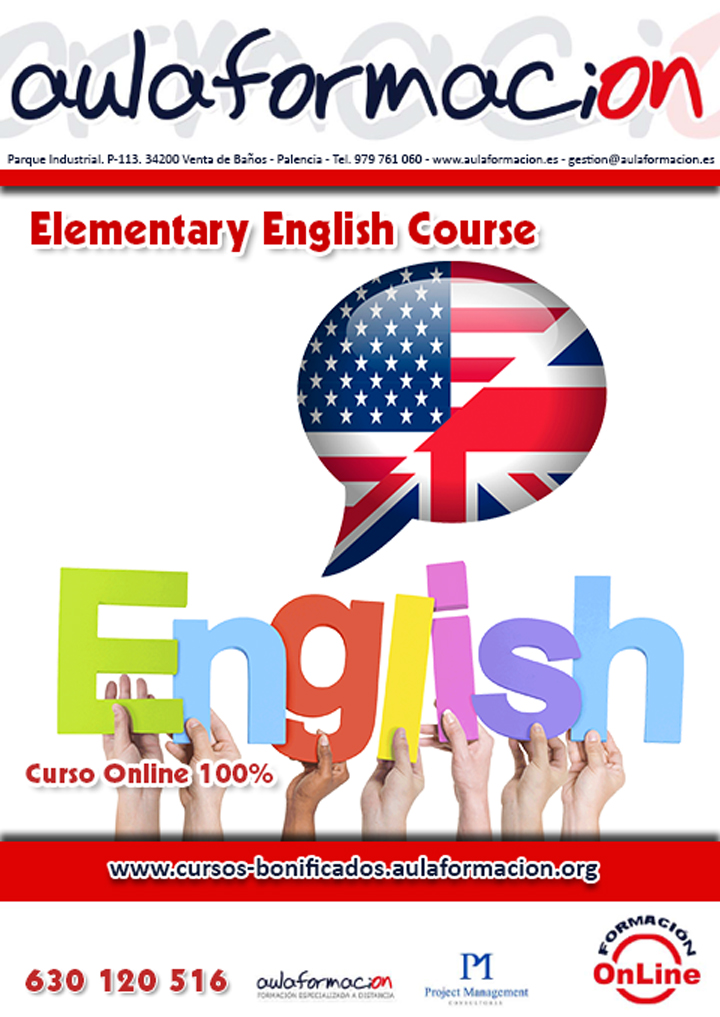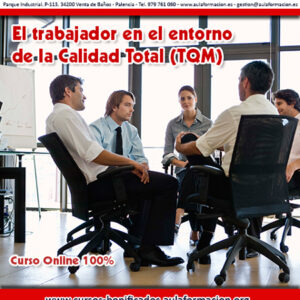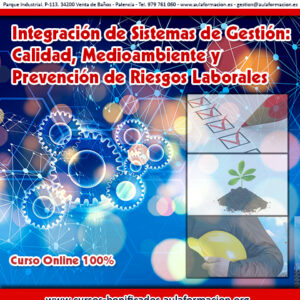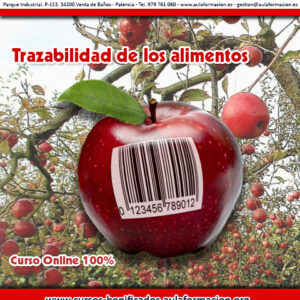Descripción
Elementary english course
OBJETIVOS
Resultados del aprendizaje:
Los estudiantes deben ser capaces de manejar los tiempos simples en Inglés y familiarizarse con el sistema de sonidos del idioma Inglés por medio de varios ejercicios de escucha en diferentes situaciones de la vida . Deben hacer descripciones y dar opiniones mediante el uso de formas comparativas y superlativas, así como la expresión de las posibilidades, las habilidades , las deducciones, obligaciones y consejos por medio de los verbos modales .
Goals
The students should be able to manage the simple tenses in English and get familiar with the system of sounds of the English language by means of several listening exercises in different situations of life. They should make descriptions and give opinions by using comparative and superlative forms, as well as expressing possibilities, abilities, deductions, obligations and advice by means of modal verbs.
DURACION
35 Horas
DESTINATARIOS:
Estudiantes sin ningún conocimiento de inglés o en inicio del proceso de aprendizaje del idioma inglés.
Metodología
El Elementary english course se imparte en la modalidad a distancia bajo metodología de aprendizaje E-Learning. La acción tutorial se desarrollará completamente a través del Campus Virtual de la Plataforma.
El Modelo de formación a distancia está basado en una combinación de una acción tutorial constante y autoaprendizaje mediante recursos didácticos multimedia e interactivos.
Según lo anterior, la formación a distancia se basa en un modelo de formación que no requiere la presencia física del alumno en una clase o centro de formación tradicional. Esto le permite compatibilizar el aprendizaje con otras actividades.
Además, el alumno es quien establece sus horarios, el ritmo y el lugar de realización del curso, aunque dentro del Plan de Trabajo establecido.
El autoaprendizaje es necesario a través del estudio y el trabajo individual.
Más información sobre el sistema de bonificación
Formación bonificada
https://cursos-bonificados.aulaformacion.org/formacion-bonificada/
Fundación Estatal para la Formación en el Empleo (FUNDAE) y el sistema de bonificación
https://www.fundae.es/empresas/home/como-bonificarte
Unidad 1. el verbo» to be»
• El verbo ser en oraciones afirmativas .
• El verbo ser en oraciones negativas
• El verbo «to be» en preguntas . Palabras de pregunta.
• Los adjetivos
Unidad 2. Presente simple con otros verbos
• El presente simple con otros verbos ..
• rutinas y hábitos diarios .
• ejercicios de habla
Unidad 3. Tiempo presente continuo
• El presente continuo .
• cuatro usos :
Una acción realizada en el momento de hablar
Una situación temporal .
Una situación cambiante .
Arreglos en un futuro próximo
Unidad 4. formas mixtas para contrastar «Simple and present proguessive»
Distinguir los diferentes usos del tiempo presente y el presente progresivo mediante el contraste de sus usos
Unidad 5. «Modal Verbs»
• El uso de «can» para expresar habilidad , posibilidad, el permiso informal o solicitud
• La utilización de «most» con la obligación , permiso o la deducción lógica
• El uso de «may» de permiso o posibilidad (también podría posibilidad de )
• El uso de •should» para la obligación moral o consejo
Unidad 6 .El pasado simple
• El tiempo pasado simple . Terminado el tiempo en el pasado .
• Los verbos regulares e irregulares en el pasado .
• Tres Pronunciaciones diferentes para los verbos regulares en el pasado / t / / d / / id /
Unidad 7 El Tiempo pasado continuo
• El Tiempo Pasado continuo .
• Un momento específico en el pasado . acciones simultáneas en el pasado .
• El contraste entre el pasado simple y continuo . (acciones interrumpido)
Unidad 8. THERE + BE para descripciones
•El uso de «there is are/ there was were» para describir.
Unidad 9. comparativas de SUPERIORIDAD
• Comparativo de igualdad
• Comparativo de inferioridad / Comparativo de superioridad
• -er …than and more…than
• Comparative of Equality as..as, the same …as
• Comparative of Inferiority less…than
Unidad 10. SUPERLATIVOS
• Formas irregulares de COMPARISSON
• El uso del sufijo -est
• El uso de thes most
• Las formas irregulares de comparación
• Better – the best, worse- the worst, ..
Unidad 11. Preposiciones de tiempo y lugar
• El uso de oft on at para tiempo
• El uso de oft on at para lugar
Unidad 12. El tiempo futuro
• Tiempo Futuro con will (won’t)
• Tiempo Futuro con Going to
| ENGLISH | An Elementary Course |
|
|
|
|
|
|
|
|
|
|
|
|
|
|
|
|
| • 9. COMPARATIVES OF
SUPERIORITY • COMPARATIVE OF EQUALITY • COMPARATIVE OF INFERIORITY |
Comparative of superiority
|
|
|
|
|
|
|






